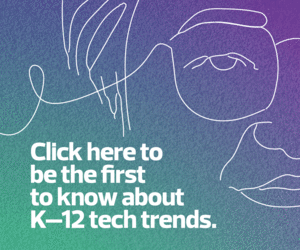The State of Literacy in the Classroom
Educators have seen steep declines in reading scores on the National Assessment of Educational Progress, considered to be “the nation’s report card.” Reading scores dipped in more than half the states, and not a single state showed sizable reading improvements. Only 31 percent of 8th graders met the reading benchmarks, showing a clear impact from the pandemic.
However, for students and educators, it’s always been about much more than a score.
Amanda Jones, a middle school librarian in Denham Springs, La., says, “The past few years have seen a push toward getting back to the foundations of teaching implicit reading instruction and a push for the science of reading. While I wholeheartedly agree, I sometimes see that promoting the joy of reading can get lost in the shuffle.”
She says providing positive reading experiences and student choice in selecting books remain the most important parts of improved literacy.
Bringing back a love of reading goes hand in hand with literacy, but educators are battling decreased interest in leisurely reading. A 2019-2020 National Assessment of Educational Progress survey reveals students between the ages of 9 and 13 report the lowest levels of reading for fun since the mid-1980s. However, next-gen tools are reinvigorating some of that passion, working with technology instead of against it.
The Impact of Low Literacy Scores on Standardized Testing
When students struggle to read, their standardized test scores are often lower for other subjects as well. For example, a student who is strong in math but struggles to read the directions might not be able to demonstrate his or her abilities.
RELATED: Tech-savvy librarians provide value to modern learners.
This is the challenge for Library Media Specialist Karina Quilantán’s emergent bilingual students.
“Coming from the Rio Grande Valley, our students are predominantly Spanish speaking. Additionally, many who come directly from Mexico enter the United States with low reading levels due to their language barriers,” says Quilantán, who works for the Pharr-San Juan-Alamo Independent School District in Texas. “This causes a ripple effect in that their language barrier affects their testing scores, and testing scores determine their interventions.”
These interventions include a variety of extra training for testing, including in-school intervention programs, after-school tutoring and periodic progress assessment through weekly assessments, marking period exams and benchmark testing.
“It seems that the majority of our time is focused on assessing the students rather than teaching them,” she says.
This is especially hard on librarians, whose space is meant for “meaningful inquiry, research and intrinsic learning,” but often becomes a testing hub, she notes.
The Role of Next-Gen Tools in Literacy Improvement
Some educators, parents and community members question whether audiobooks are an “easy way out” and whether they really improve literacy. Quilantán has seen audiobooks’ exceptional effects on literacy for students, improving fluency, vocabulary, oral language and comprehension skills, she notes.
“They are legitimate reading material and are a great resource that cater to second-language learners and students with visual impairments and learning disabilities. Listening to audiobooks not only helps with listening skills but also assists students in learning more about language contexts, conveying tone and having the opportunity to listen to experienced readers read out loud,” she says. “I have witnessed firsthand how audiobooks or read-to-me books paired with print material can increase a student’s understanding of the text they are reading.”














